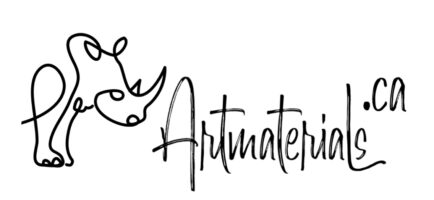- You have no items in your shopping cart
- Continue Shopping

In this short article we’ll talk about how to choose Kolinsky sable brushes. There are many aspects to consider before buying a brush, from your goals to ethical questions.
Kolinsky paint brushes for watercolour
Watercolour is one of the most common use for Kolinsky sable brushes and there are strong reasons for that. What are artists looking for in watercolour brushes? Softness, pointy tip, high absorbency of water, slow release of paint. Kolinsky sable brushes have these all!
Kolinsky sable is considered to have the best hair in the world due to its unique characteristics. The thickest part of the hair can be 0.15mm, which is comparable to hog bristle, while the tip is as fine as squirrel’s one. These makes kolinsky sable brushes flexible and “springy” and soften the same time.
Apart from squirrel brushes, that highly recommended for work with watercolours, kolinsky brushes are more “springy” that gives more control over fine lines and detailed work. Compared to any synthetic brush, that are very common nowadays, kolinsky brushes can release water gradually, not everything at once, that makes painting process are enjoyable and predictable.
Kolinsky paint brushes for acrylic
RUSART doesn’t recommend kolinsky for acrylic painting. Not because the brushes don’t work well with this medium; here we have the opposite – acrylic doesn’t fit kolinsky sable. Due to nature of acrylic paints, they destroy and split natural soft kolinsky sable hair.
Kolinsky paint brushes for oil
As we mentioned at the beginning, kolinsky sable brushes work well for soft-bodied paints. That means these brushes will be perfect for glazing techniques: extra-soft application and thinnest finest spread guaranteed. A lot of artists use sable brushes for very detailed work, like portraying, or for miniature painting. None of synthetic brushes is able to substitute them. Our Roubloff Premium series are perfect for miniature paintings and precise works.
Sable paint brushes for tempera
PVAc tempera paints require Kolinsky sable brushes for painting on wood. Due to capability of holding water and keeping the tip pointy you can make as many glazes as you want and stay within the outlines.
Studio grade vs. professional grade
Price range for Kolinsky brushes is quite wide. A round brush of the size 1, for example, can cost $2 or $20 and more. What makes the brushes cost so different? Of course, brand name contributes a lot into pricing, but let’s put this aspect aside and just focus on technical questions of costs.
Generally speaking, the Kolinsky brushes are expensive because their natural hair is quite rare and not easy to find. Another aspect is that only male belly part works well for professional painting. Other parts don’t provide either elasticity or durability and may not hold a pointy tip. That’s why only limited number of hair can be used in production of artist grade brushes. Hair outside the most precious part goes for studio grade brushes. They are still soft, but don’t provide the same superior quality application.
Ethical questions
Based on different independent studies only wild kolinsky sable hair provides decent quality, which makes these brushes even more expensive and rare. Unfortunately, manufacturers don’t disclose information on their sources, but apparently, if you want authentic Kolinsky, check manufacturers located closer to natural habitat of sables.
And, of course, to reduce numbers of live animal trade buy kolinsky brushes when it’s really-really necessary, like for very detailed oil painting works or restorations etc. In most cases animal sourced brushes can be replaced with synthetic cruelty-free options. Check our squirrel imitation brushes, the closest ones to Kolinsky sable. And, of course, the better care you provide for you brushes the longer they will last.
Cleaning and care
The rule here – the less is the more, which means the less cleanser you use the better for Kolinsky sable brushes. After watercolour just rinse them in water and leave them to dry “upside down”. Don’t leave brushes in water and the tip can bend and ruin your brush.
After oil painting we suggest using special RUSART Naturals: Oil-based brush cleanser. It gently cleans your brushes and conditions them in seconds. After acrylic or tempera painting we suggest to use RUSART Naturals: Marseille Soap, which thanks to natural clays and olive oil removes paint particles and prolongs brush life.
You can buy Kolinsky brushes at RUSART made by Roubloff, Old Holland and ROSA.
We hope this short overview gave you some ideas on how and when choose kolinsky brushes.
(c) RUSART



